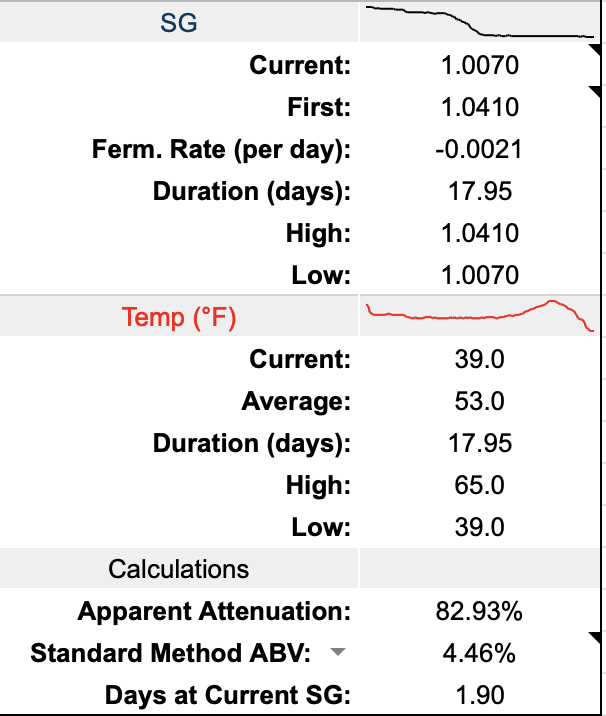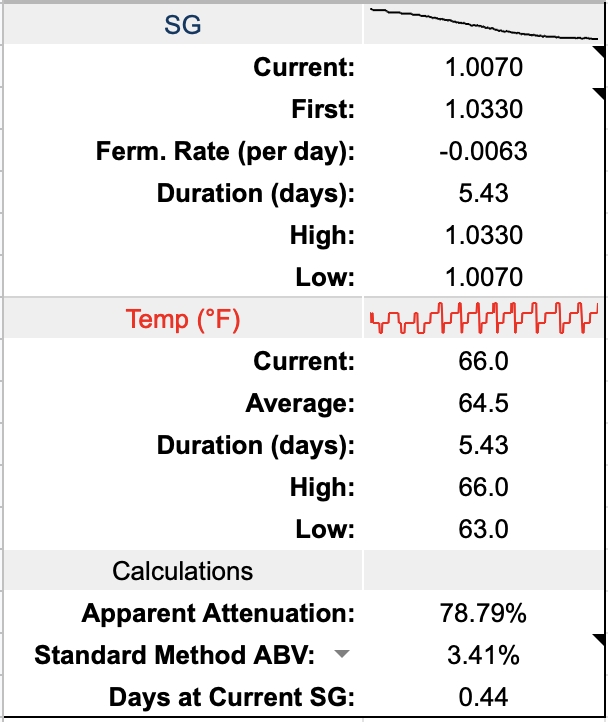Jack Arandir
Well-Known Member
My last two brews wound up overattenuating. Does anyone have any advice for this?
Munich Helles (split batch):
OG: 1.043
Yeast strain: WLP860 Munich Helles Lager
Target FG: 1.011 - 1.013 (68-72%)
Actual FG: 1.007 (83%)

Munich Helles (split batch):
OG: 1.043
Yeast strain: WY2308 Munich Lager
Target FG: 1.011 - 1.012 (70-74%)
Actual FG: 1.010 (76%)
Note: BeerSmith projected FG 1.010, so it was dead on.
(No Tilt data on this batch, since I only have one.)
English Bitter
OG: 1.033
Yeast strain: WY1968 London ESB
Target FG: 1.009 - 1.010 (68-72%)
Actual FG: 1.007 (79%)

Fermentation profiles:
Helles: Primary at 50F until FG reached, 65F diacetyl rest, 38F cold crash. Temp changes 2-4F/day.
Bitter: Primary at 65F.
Some things I'm thinking:
* I initially thought infection, but after multiple taste tests I can't detect any.
* Helles had a protein rest and decoction mash, so may have created an especially fermentable wort.
* Bitter was single infusion, but saccharification was a few degrees low. (Target 152, actual 147. I added a second infusion to top it to 152).
* WLP860 was a 5L starter because the yeast was past expiration. The starter was vigorous, so it was likely an overpitch.
* WY2308 and WY1968 were fresh smack packs. For the bitter it was probably an overpitch given the low OG.
* Munich w 860 and Bitter were both fermented in a stainless conical (Spike CF15) while Munich with 2308 was fermented in a bucket. Can the conical affect yeast FG?
I'm not concerned, and the beers are good tasting. But I'm confused why I'm not hitting the manufacturer numbers.
Munich Helles (split batch):
OG: 1.043
Yeast strain: WLP860 Munich Helles Lager
Target FG: 1.011 - 1.013 (68-72%)
Actual FG: 1.007 (83%)

Munich Helles (split batch):
OG: 1.043
Yeast strain: WY2308 Munich Lager
Target FG: 1.011 - 1.012 (70-74%)
Actual FG: 1.010 (76%)
Note: BeerSmith projected FG 1.010, so it was dead on.
(No Tilt data on this batch, since I only have one.)
English Bitter
OG: 1.033
Yeast strain: WY1968 London ESB
Target FG: 1.009 - 1.010 (68-72%)
Actual FG: 1.007 (79%)

Fermentation profiles:
Helles: Primary at 50F until FG reached, 65F diacetyl rest, 38F cold crash. Temp changes 2-4F/day.
Bitter: Primary at 65F.
Some things I'm thinking:
* I initially thought infection, but after multiple taste tests I can't detect any.
* Helles had a protein rest and decoction mash, so may have created an especially fermentable wort.
* Bitter was single infusion, but saccharification was a few degrees low. (Target 152, actual 147. I added a second infusion to top it to 152).
* WLP860 was a 5L starter because the yeast was past expiration. The starter was vigorous, so it was likely an overpitch.
* WY2308 and WY1968 were fresh smack packs. For the bitter it was probably an overpitch given the low OG.
* Munich w 860 and Bitter were both fermented in a stainless conical (Spike CF15) while Munich with 2308 was fermented in a bucket. Can the conical affect yeast FG?
I'm not concerned, and the beers are good tasting. But I'm confused why I'm not hitting the manufacturer numbers.
Attachments
Last edited:




